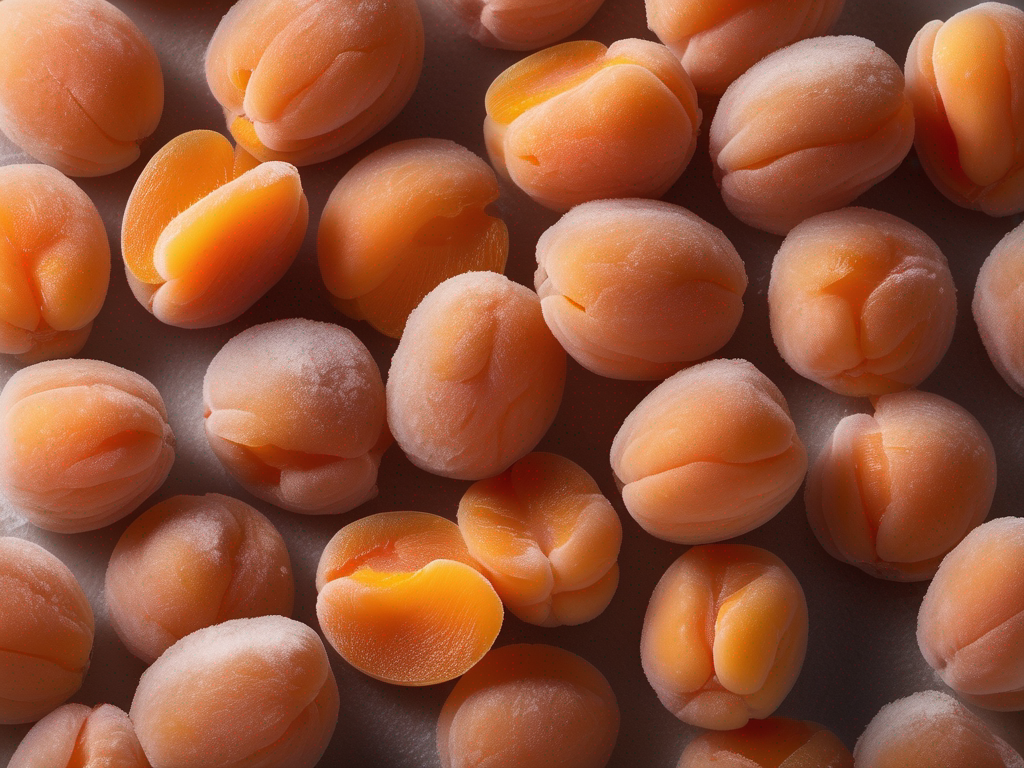
Thawing Frozen Apricots: Best Practices for Optimal Taste and Texture
Get Your Free Food Safety Cheat Sheet
30 most common foods with instant answers. Print it and stick it on your fridge—completely free!
Thawing Frozen Apricots: Best Practices for Optimal Taste and Texture
Frozen apricots are a convenient way to enjoy this delicious fruit year-round, but thawing them properly is crucial to preserving their taste and texture. In this guide, we will explore the best methods for thawing frozen apricots to ensure that they retain their flavor and juiciness. (Frozen apricots)
Why Thawing Matters
Thawing frozen apricots correctly is essential for several reasons:
- Preserves Flavor: Proper thawing helps maintain the natural taste of the apricots.
- Retains Texture: Thawing methods can impact the texture of the apricots, ensuring they are not mushy or overly soft.
- Food Safety: Thawing apricots at the right temperature reduces the risk of bacterial growth.
The Best Ways to Thaw Frozen Apricots
There are several methods for thawing frozen apricots, each with its own benefits. Here are some recommended techniques:
1. Refrigerator Thawing
Thawing frozen apricots in the refrigerator is the safest method, albeit the slowest. Follow these steps for refrigerator thawing:
- Place the frozen apricots in a bowl or container.
- Place the container in the refrigerator and allow the apricots to thaw slowly over 24-48 hours.
- Once thawed, consume the apricots within 2-3 days for the best quality.
2. Cold Water Thawing
If you need to thaw apricots more quickly, cold water thawing is a suitable alternative. Here's how to do it:
- Fill a large bowl with cold water.
- Place the frozen apricots in a sealed plastic bag and submerge them in the water.
- Change the water every 30 minutes to maintain a consistent temperature.
- Thawing typically takes 1-2 hours, depending on the size of the apricots.
3. Microwave Thawing
Microwaving is the quickest thawing method, but it requires careful monitoring to prevent the apricots from cooking. Follow these steps for microwave thawing:
- Place the frozen apricots on a microwave-safe plate.
- Use the defrost setting or set the microwave to 50% power.
- Microwave in 1-minute intervals, flipping the apricots each time until they are thawed but still slightly frozen in the center.
- Let the apricots sit for a few minutes before using them.
4. Room Temperature Thawing (Not Recommended)
Thawing apricots at room temperature is not recommended as it can lead to uneven thawing and increase the risk of bacterial growth. However, if you choose to thaw apricots at room temperature, follow these guidelines:
- Place the sealed bag of frozen apricots on the counter.
- Check the apricots periodically to ensure they are not becoming too warm.
- Use the apricots immediately once thawed.
Tips for Thawing Frozen Apricots
- Always thaw apricots in the refrigerator if you have the time for the best results.
- Do not refreeze apricots once they have been thawed.
- Use thawed apricots in recipes that call for cooked or pureed apricots if the texture has changed slightly.
- Store any leftovers in the refrigerator and consume them within a few days.
Conclusion
Thawing frozen apricots properly is essential for preserving their taste and texture. By following the recommended thawing methods and tips outlined in this guide, you can enjoy delicious apricots that retain their flavor and juiciness. Experiment with different thawing techniques to find the method that works best for your needs and enjoy the sweet taste of apricots year-round. Learn more about frozen apricots here. (Frozen apricots)
Authoritative Food Safety References
These agencies and university labs inform every tip and health precaution we publish.
USDA FoodKeeper – Cold Storage Guidelines
Official refrigerator, freezer, and pantry timelines maintained by the U.S. Department of Agriculture.
Visit USDA FoodKeeperFDA Produce Safety Rule & Grower Guidance
Field-to-fridge handling practices that prevent contamination of fruits, vegetables, and leafy greens.
Visit FDA Produce SafetyCDC Foodborne Illness Prevention Hub
Surveillance-backed guidance on pathogens, symptoms, and steps to reduce foodborne illness risk.
Visit CDC Food SafetyUC Davis Postharvest Technology Center
University research detailing optimal storage atmospheres for produce after harvest.
Visit UC Davis PostharvestPenn State Extension – Home Food Preservation & Safety
Peer-reviewed extension bulletins on safe canning, chilling, and reheating practices.
Visit Penn State ExtensionGet Your Free Food Safety Cheat Sheet
30 most common foods with instant answers. Print it and stick it on your fridge—completely free! Want more? Upgrade to the complete guide with 70+ foods.
Scan your food directly and get instant safety info using our AI-powered camera feature.